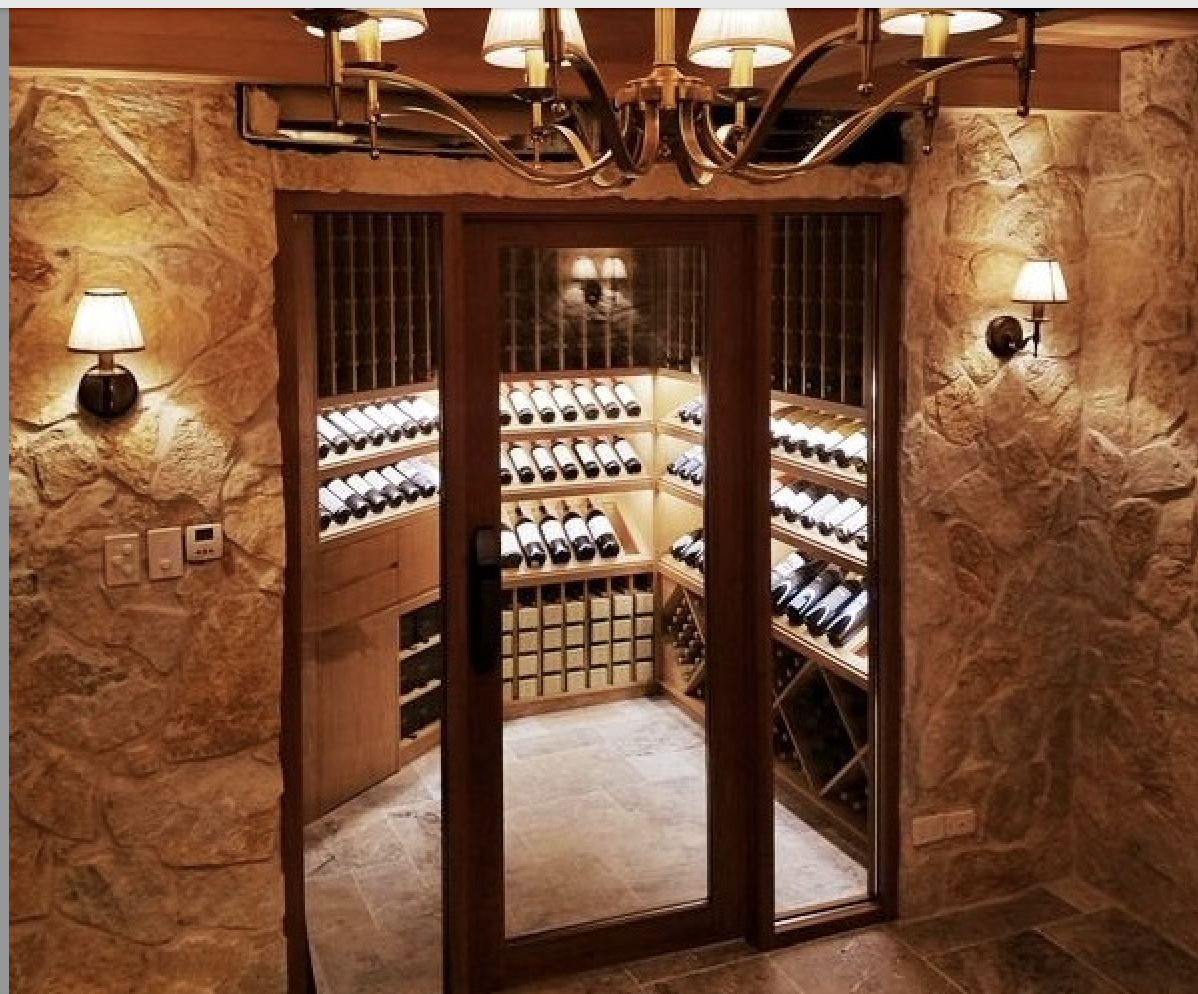What’s Your ‘Home Maintenance’ Style?
Finding your place on the Fixer/Non-Fixer spectrum.
Since ancient times, humans have believed that the world is divided into two types of people: those who perform timely routine maintenance and repair on their homes, and those who don’t.
Fixers take great pride in their understanding of the complications and quirks of their home and how to keep it all working. They possess many tools and manuals. A stud finder. Soldering gun. Extra copper piping in the cellar. A toilet snake. They sometimes won’t stop talking about gutters.
Non-Fixers are overwhelmed, uninterested or too busy to learn the basics of maintenance and routine household repair. They’re terrified that if they try, they’ll start breaking stuff that worked perfectly well. Or they very reasonably believe that if they learn to do one maintenance thing and demonstrate any proficiency in it, they will be on the hook for learning and doing all the other maintenancey things their home requires. Many pay others to do the work. Some Non-Fixers just ignore their house maintenance and repair needs thinking they will go away. Actually, many Non-Fixers do this. Others could be Fixers, but their life is filled with other things they would prefer to do, such as drink martinis on the couch and watch ‘Full House’ reruns.
Conventional wisdom holds that we are assigned a Fixer or Non-Fixer designation at birth and that it is an immutable trait that cannot be altered during our lifetimes, like eye colour or a hatred of cilantro. Alternatively, some fervently believe that our maintenance style is a choice, and that we can simply decide which type of person we wish to be. The extremists among this group also believe that being a Fixer is the only proper, moral choice, and that Non-Fixers are broken, bad humans.
I suggest a third option: We are all on a “maintenance spectrum.” We each have a bit of Fixer and a bit of Non-Fixer and the percentages ebb and flow and shift back and forth as circumstances in our lives and homeownership change.
Take the Late-Life Fixer. This is a person who was always too busy with family and job to learn and perform routine maintenance or repairs. They hired somebody to do these things for them. The math worked: the Non-Fixer’s job paid more money hourly than whatever they paid the professional. They reserved their weekends for friends and family, not Fixing stuff.
Then, they retire. Suddenly, not only does their fixed income require them to learn and perform household maintenance, they actually want to. They are bored with their new, endless hours of free time, which they have because they never developed a real hobby. Fixing stuff also creates a sense of purpose and control that is sorely lacking since they lost their minions and bosses.
Conversely, some lifelong Fixers approach retirement age too tired and broken down by a lifetime of diligent maintenance to continue tackling their perpetual to-do list. So they convert, at an astonishing speed, to a Non-Fixer: They buy a condo, hire out every single interior maintenance and repair project, and if they can’t find someone to do it, they call one of their kids to come over and do it. They begin to drink martinis on the couch while watching reruns of ‘Full House.’
Some Non-Fixers realize that they are Fixers when they purchase a home. After several unsatisfactory encounters with paid professional Fixers who take months to arrive and overcharge by a factor of four, they decide to learn to do it themselves. They venture slowly into this terrain, but thanks to the Font of All Fixer Knowledge (YouTube), they begin exploring projects of which they never could have conceived: fixing garbage disposals, cleaning gutters, changing water filters, even rewiring lamps. They like the sense of self-sufficiency and freedom. They enthusiastically embrace their Fixer identity, including joining a plumbing repair Facebook page and going to electrical-wiring Meetups.
Some people are Maintenance Fluid: A Fixer one day when the stopper/floating-ball mechanism on the toilet stops working; a Non-Fixer the next when the ceiling fan starts making a sound like it’s chewing ground glass.
Of course, there are some who are so far on one end of the spectrum or the other, so wedded to their maintenance identity, they will never move either way. This phenomenon is most common among The Obsessive-Compulsive Fixers, who view maintenance of their home as a battle against entropy and chaos that they simply cannot stop fighting, and the Sloth Non-Fixers, who don’t even know how to work the oven, let alone fix the pilot light. These people never question their identity one way or the other, often due to local cultural norms, family pressure or fear of bullying. On the rare occasions when these people do explore alternatives, they are likely to swing so far to the other side of the spectrum that they become almost unrecognizable to their family and friends, who may ostracize them, especially when a new Fixer convert renders the dishwasher inoperable, or a fledgling Non-Fixer refuses to change out the remote control batteries.
The most important thing, regardless of where on the maintenance spectrum you or your loved ones fall, is to accept that there is no right answer. We must learn to respect and honor people who occupy all points on the Fixer continuum and allow them to explore and experiment with their desires to maintain and repair the siding, gutters, water filters and rotting wood on the deck—or not. Most importantly, remember this: There is no room for hate in household maintenance. Only room for improvement.
 Copyright 2020, Dow Jones & Company, Inc. All Rights Reserved Worldwide. LEARN MORE
Copyright 2020, Dow Jones & Company, Inc. All Rights Reserved Worldwide. LEARN MORE
This stylish family home combines a classic palette and finishes with a flexible floorplan
Just 55 minutes from Sydney, make this your creative getaway located in the majestic Hawkesbury region.
Competition to buy the world’s most exclusive stores is intense despite modest rent growth. Even Blackstone is ogling the market.
Don’t expect any fashion bargains on Rodeo Drive in Beverly Hills, or New York’s Fifth Avenue. And property on these famous luxury shopping streets looks as overpriced as the clothes.
While the average commercial building is worth 20% less than in 2022, the world’s most exclusive shops have barely been touched by the highest U.S. and European interest rates in two decades.
Cartier’s Swiss owner, Compagnie Financière Richemont , recently bought a property on London’s Bond Street at a rock-bottom 2.2% rent yield. Similar to the way bonds work, the lower the rent yield, the richer the price paid. The Bank of England’s base rate is around double this level. Most investors these days wouldn’t buy real estate that generates less income than the cost of debt that might be used to purchase it.
Last month, Blackstone sold a luxury store on Milan’s Via Montenapoleone to Gucci owner Kering for a similarly eye-catching price. The building was part of a portfolio of 14 properties that Blackstone bought in 2021 for 1.1 billion euros, equivalent to roughly $1.2 billion. Kering coughed up €1.3 billion, or about $1.4 billion, for the Via Montenapoleone building alone, equivalent to a 2.5% rent yield.
The private-equity firm is understandably eager to do more deals like this, and has since bought another luxury store in London. It is a surprising focus for Blackstone, which for years steered clear of retail property.
Luxury rents are resilient, but they aren’t rising fast enough to justify such hefty price tags for the buildings. Last year, rents increased 3% on Rodeo Drive and were flat on Upper Fifth Avenue, according to data from Cushman & Wakefield .
What luxury retail properties do offer is scarcity. London’s Bond Street has 150 individual buildings, according to real-estate consulting firm CBRE . But because luxury brands are fussy about where they will open a flagship store, only around two-thirds of the street is considered posh enough, limiting their options.
Supply is even tighter on New York’s Fifth Avenue, where just four or five blocks of the six-mile avenue are ritzy enough to lure the world’s most expensive brands. The luxury shopping district of Rodeo Drive in Los Angeles has fewer than 50 individual buildings.
This creates intense competition for both space and ownership. The world’s biggest luxury company, LVMH , has more than 70 brands that need a foothold on prominent shopping streets. Increasingly, LVMH’s answer is to buy the best locations. The Paris-listed company owns at least six properties on Rodeo Drive and six on London’s Bond Street.
Luxury brands see their flagship stores as marketing tools. Counterintuitively, e-commerce has made its physical locations more important. Labels including Christian Dior have opened restaurants and mini museums in their boutiques to give shoppers an experience they can’t find online.
When they are investing this much money in refurbishments, it makes more sense to own than to rent . Luxury brands have spent more than $9 billion buying boutiques since the start of 2023, according to a Bernstein analysis, and they control increasingly larger tracts of major shopping districts. Back in 2009, brands owned 15% of the buildings on London’s Bond Street, says Phil Cann, an executive director at CBRE. Today, their share has jumped to 30%.
Luxury labels also need to avoid being kicked out of a property by a rival-turned-landlord, which is happening more often. British handbag maker Asprey was given its marching orders by Hermès on London’s Bond Street. The French brand bought the building that Asprey occupied since the 1840s and wants to convert it into an Hermès flagship. Rolex recently bought a store that is rented out to Patek Philippe, although its competitor doesn’t need to move out any time soon as there are still several years left on the lease.
Most luxury stores are still in the hands of sovereign-wealth funds or rich families who might have owned the buildings for decades. Given the enticing prices that brands are willing to pay despite high interest rates, more are considering cashing out.
Landlords from Hong Kong, who began parking their cash in luxury stores around 2010, are among those selling up. New York real-estate investor Wharton Properties also sold two Fifth Avenue buildings to Kering and Prada this year at very high prices that were equivalent to 2% rent yields. Wharton is experiencing some distress in other parts of its portfolio, so it might have needed to raise funds.
Luxury brands made huge amounts of money during the pandemic. Richemont currently has more than €7 billion of net cash sitting on its balance sheet. Merger and acquisition activity has been quiet, so real estate might be the next-best thing to pour their riches into.
Property deals on the world’s most expensive streets will continue to operate in their own twilight zone, no matter what central bankers do next.
Just 55 minutes from Sydney, make this your creative getaway located in the majestic Hawkesbury region.
Consumers are going to gravitate toward applications powered by the buzzy new technology, analyst Michael Wolf predicts























